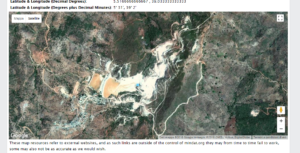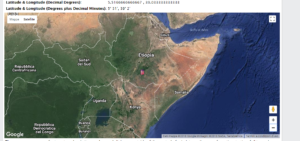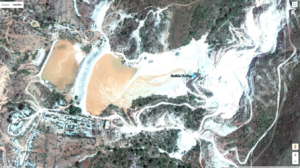Almost all the tantalum produced in the world comes from two countries, even if the statistics hide a secret: the source of almost all the metal is in one country, the Democratic Republic of the Congo.
Tantalum is a key component in many modern technologies, since it is used to produce capacitors, without which there would be no computers and smartphones.
Despite its importance in today’s world, tantalum mining takes place only in very few countries in the world. Most of this rare metal is mined in Rwanda and in the Democratic Republic of the Congo (DRC), areas that are sadly known for the so-called bloody minerals. These two countries alone represent around 60% of global production.
But the complete picture of the countries that produce the most tantalio in the world is the one that emerges from the ranking that follows, produced thanks to the 2017 data of the US Geological Survey (USGS).
1
RWANDA (mining production: 390 tons)
Rwanda is officially the largest producer of tantalum in the world but, as mentioned, mining in this country is a source of enormous problems and suffering for the local population. Moreover, as everyone knows now, most of Rwanda’s mineral production comes from the Democratic Republic of the Congo, the epicenter of the bloody minerals. In fact, it is currently impossible to know what the real production of Rwanda is.
2
DEMOCRATIC REPUBLIC OF THE CONGO (mining production: 370 tons)
The country, according to official statistics, produced about 30% of the world tantalum. However, it is believed that production is much greater even if ‘targata’ as Rwanda. Mining practices in the DRC take place in a context of corruption, violence and immoral practices. The United States and Europe have tried to discourage companies from buying bloodied tantalum, but without success. For example, in the US, the Dodd-Frank Wall Street Reform and the Consumer Protection Act sought to halt the flow of minerals from the DRC but the Trump administration has expressed a desire to repeal some parts of these laws.
3
NIGERIA (mining production: 190 tons)
It is believed that the nation has large tantalum reserves, although the exact figure remains unknown. Instead, it is known that most of its tantalum comes from the tantalum which is found in the states of Nasarawa, Kogi, Osun, Ekiti, Kwara and Cross Rivers.
4
BRAZIL (mining production: 100 tons)
Brazil, with 34,000 tons of reserves, is one of the two producing countries outside the African continent. The largest tantalum mine in the country is MIBRA, owned by Advanced Metallurgical Group. In light of the problems afflicting Rwandan and Congolese suppliers, Brazil could become a major source for companies worldwide in the coming years.
5
CHINA (mine production: 95 tons)
The country’s output remained stable on an annual basis, increasing only 1 tonne compared to 2016. It is the leading tantalum supplier country for American companies.


 NDA
NDA 
 (mining production: 150 tons). Brazil is the largest producing nation of tantalum outside Africa and has reserves estimated at 36,000 tons. The largest tantalum mine in the country is Mibra, owned by the Advanced Metallurgical Group NV. In light of the problems of Rwanda and Congo, it is foreseeable that in the coming years Brazil will become one of the main sources of tantalum for companies all over the world.
(mining production: 150 tons). Brazil is the largest producing nation of tantalum outside Africa and has reserves estimated at 36,000 tons. The largest tantalum mine in the country is Mibra, owned by the Advanced Metallurgical Group NV. In light of the problems of Rwanda and Congo, it is foreseeable that in the coming years Brazil will become one of the main sources of tantalum for companies all over the world.
 (mining production: 50 tons). With estimated reserves of 67,000 tons, it extracts tantalum mainly from the Greenbushes mine, best known for its lithium deposits.
(mining production: 50 tons). With estimated reserves of 67,000 tons, it extracts tantalum mainly from the Greenbushes mine, best known for its lithium deposits.


